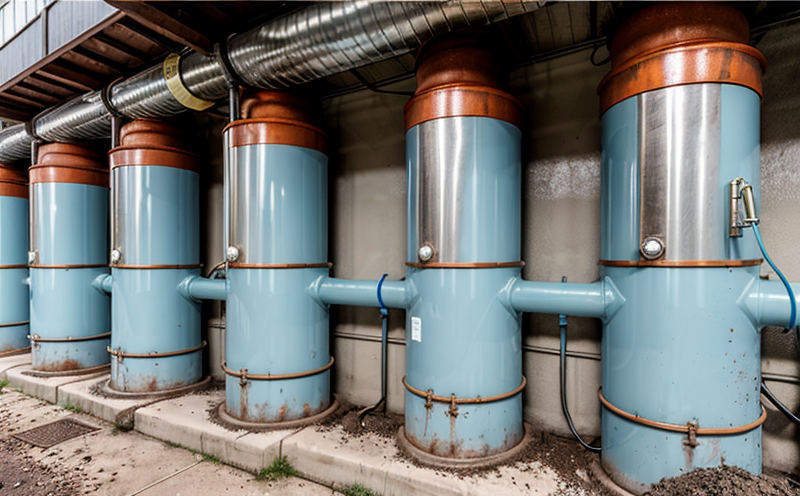ASTM D1067 Alkalinity Test in Water Systems
The ASTM D1067 standard method is widely used to determine the alkalinity of water samples. This test measures the total number of equivalents of bases that are present in a given volume of water, which includes hydroxide (OH-), carbonate (CO3^2-), bicarbonate (HCO3^-), and other basic species.
Alkalinity is an important parameter for ensuring safe and efficient water and wastewater treatment processes. It plays a crucial role in buffering systems to prevent pH changes that could affect the performance of various treatment methods. Understanding alkalinity levels helps in optimizing chemical dosages, managing corrosion risks, and ensuring effective scale inhibition.
This test is particularly critical for industries such as power generation, oil and gas exploration, pharmaceuticals, and water utilities where water quality must meet stringent regulatory standards. The ASTM D1067 method ensures consistency and reliability across different testing facilities by providing a standardized approach to measuring alkalinity in various types of water systems.
The test involves titration using a strong acid (such as sulfuric or nitric) to neutralize the bases present in the sample until a specific end point is reached. The volume of the acid required for this neutralization can be used to calculate the total alkalinity concentration.
For accurate results, proper specimen preparation is essential. This includes ensuring that the water sample is representative and free from contamination. Properly cleaning and calibrating equipment such as burettes, stoppers, and titration flasks ensures precise measurements during the test.
The ASTM D1067 method also allows for the determination of various types of alkalinity including total alkalinity, phenolphthalein alkalinity (PA), and methyl orange alkalinity (MOA). Understanding these different forms of alkalinity helps in diagnosing specific issues such as carbonate hardness or buffering capacity.
| Alkalinity Type | Description |
|---|---|
| Total Alkalinity | Sum of all bases present in the water sample including OH-, CO3^2-, and HCO3^-. |
| Phenolphthalein Alkalinity (PA) | Bases that are neutralized by phenolphthalein indicator, typically OH- and CO3^2-. PA is measured after a phenolphthalein endpoint. |
| Methyl Orange Alkalinity (MOA) | Alkalinity above the phenolphthalein endpoint to the methyl orange endpoint, which includes HCO3^-. |
The ASTM D1067 method is an essential tool for ensuring water quality compliance and process optimization. It helps in identifying potential issues such as high alkalinity levels that could lead to scaling or corrosion problems within the system. Regular monitoring of alkalinity ensures that treatment processes are effective, reducing operational costs and improving overall efficiency.
Industry Applications
- Potable water supply systems
- In-process and effluent water from industrial plants
- Water used in cooling towers and other HVAC applications
- Drinking water treatment facilities
- Water recycling and reuse systems
- Environmental monitoring of surface and ground waters
The ASTM D1067 alkalinity test is critical for these industries as it helps ensure that the water quality meets regulatory requirements and operational standards. Accurate measurements of alkalinity are essential for maintaining system integrity, optimizing treatment processes, and ensuring compliance with environmental regulations.
Customer Impact and Satisfaction
The ASTM D1067 test provides critical insights into the chemical composition of water systems, which directly impacts customer satisfaction. Accurate alkalinity testing ensures that water quality is consistently high, minimizing issues such as scaling and corrosion in industrial processes.
- Reduces operational downtime by preventing equipment failures due to scale build-up
- Improves product quality through consistent water quality control
- Saves costs associated with premature replacement of system components
- Enhances safety by ensuring that water systems operate within safe pH ranges
- Facilitates compliance with industry and regulatory standards, reducing penalties for non-compliance
Clients who rely on accurate alkalinity testing can trust in the reliability of their water systems. This ensures not only operational efficiency but also contributes to a sustainable approach towards resource management.





